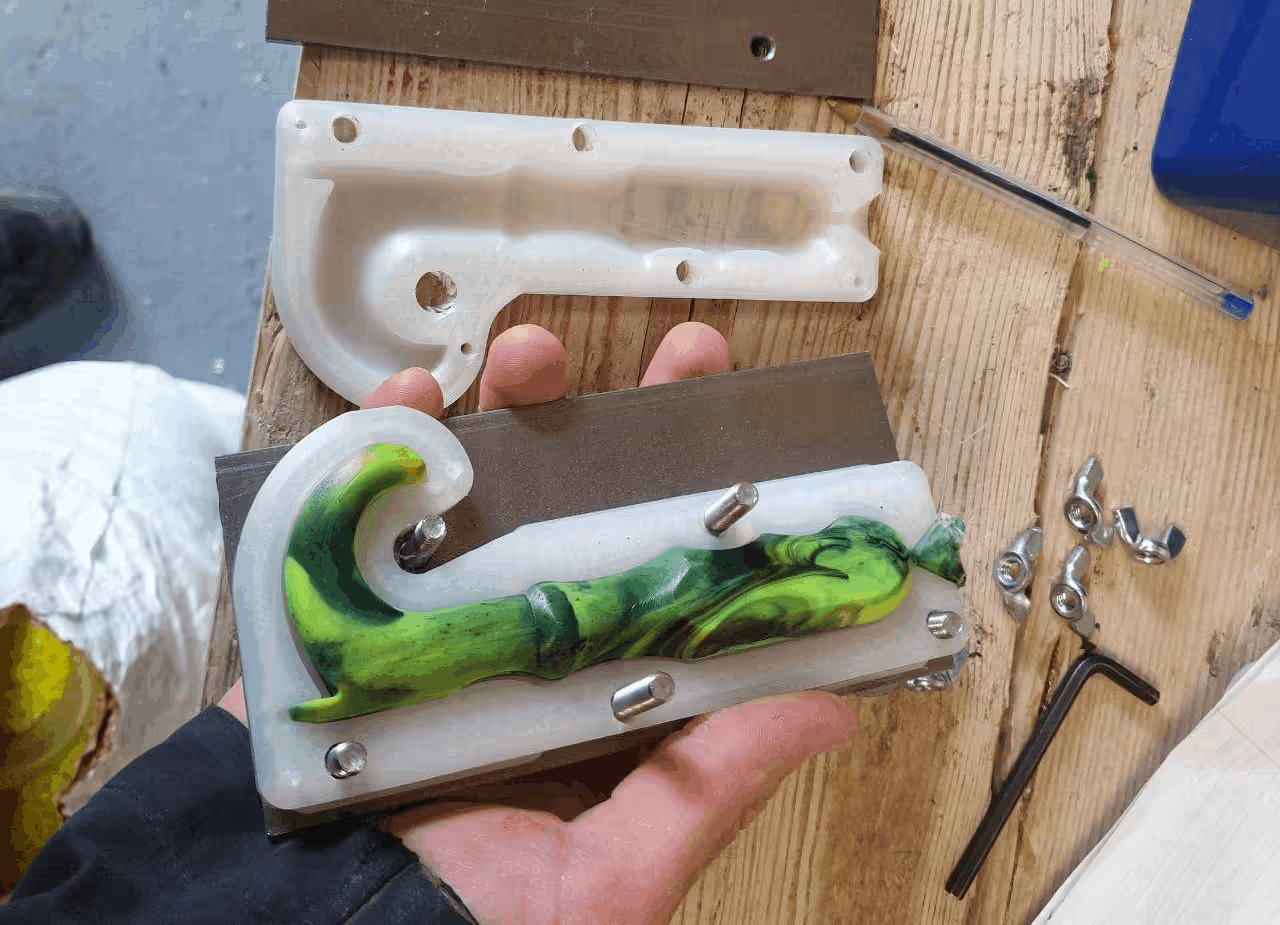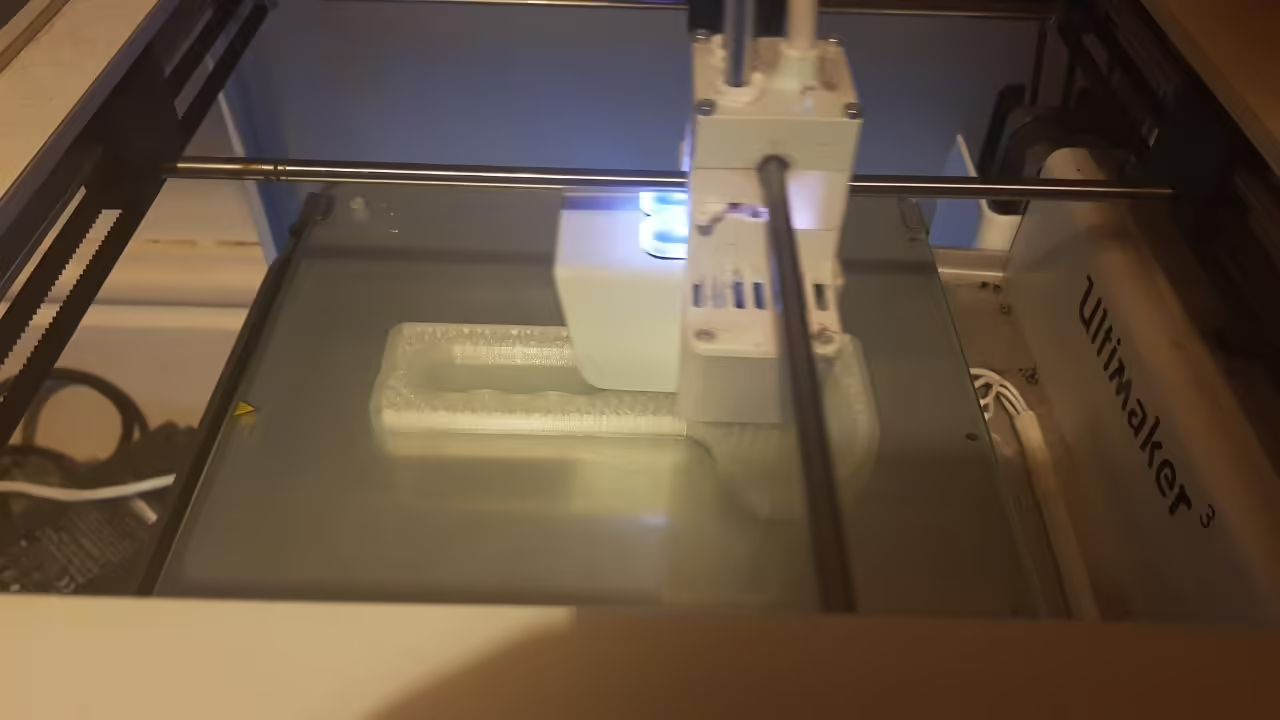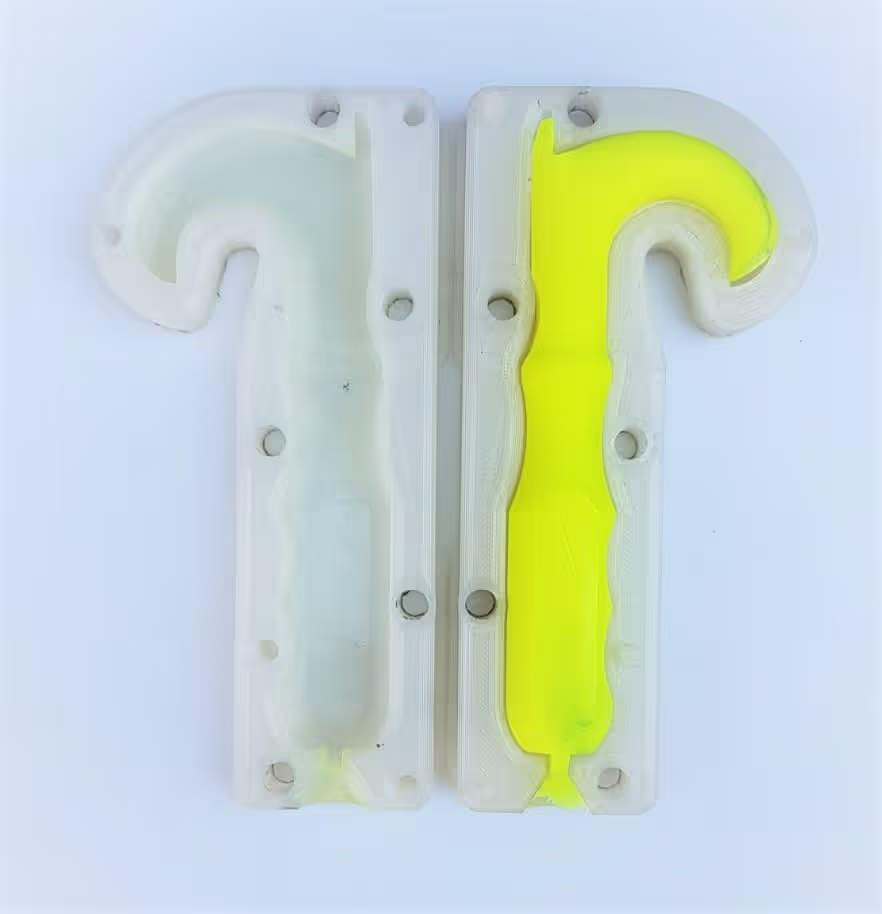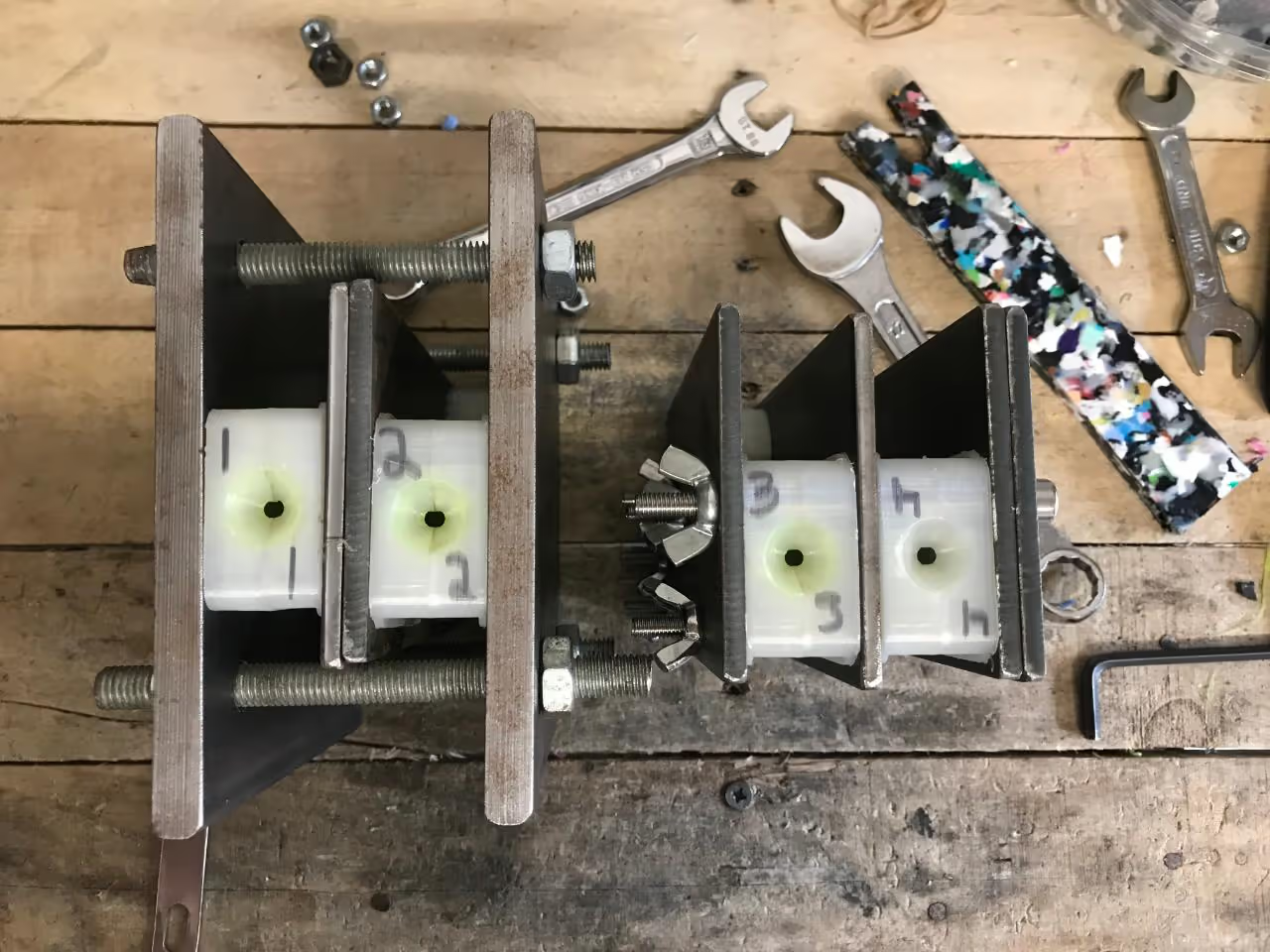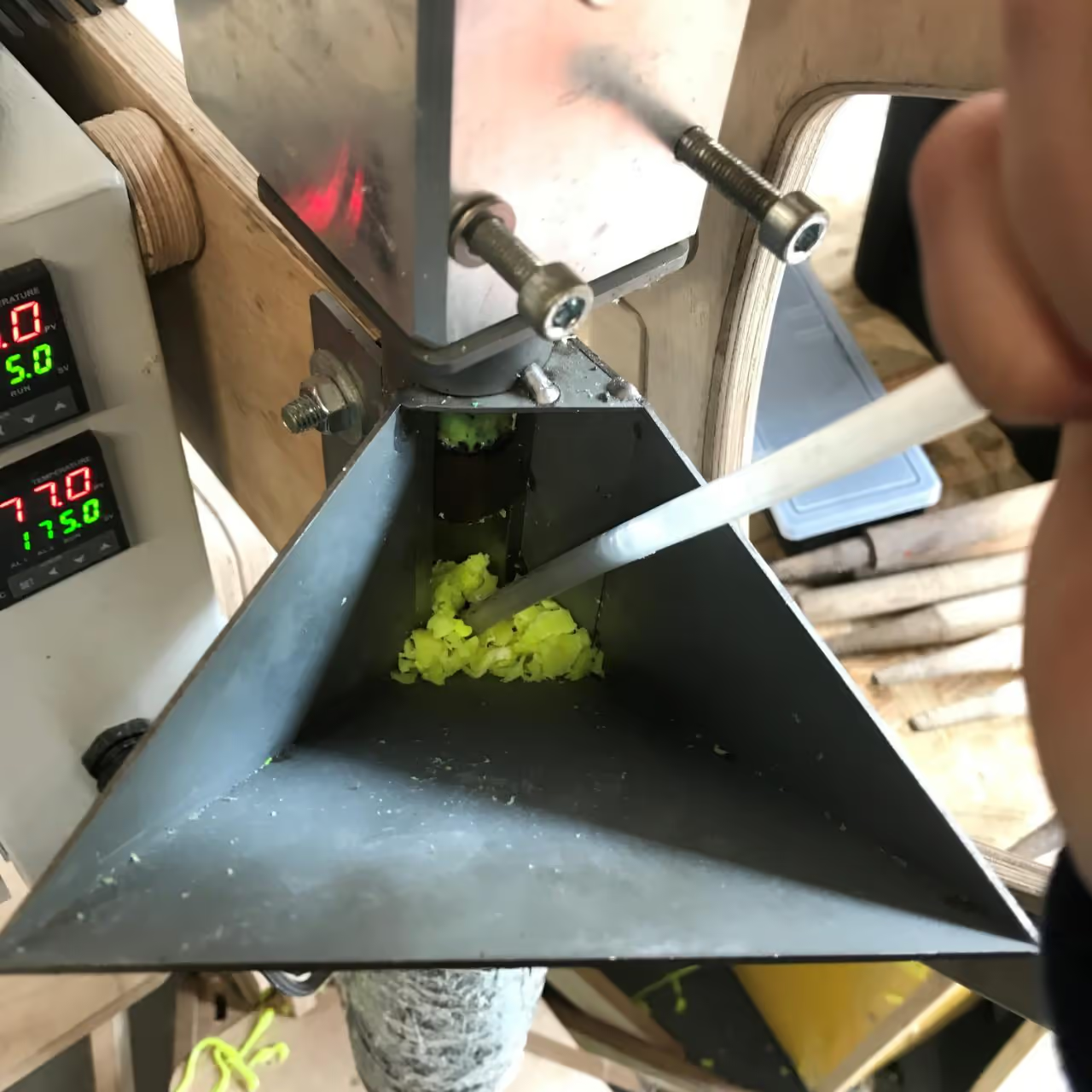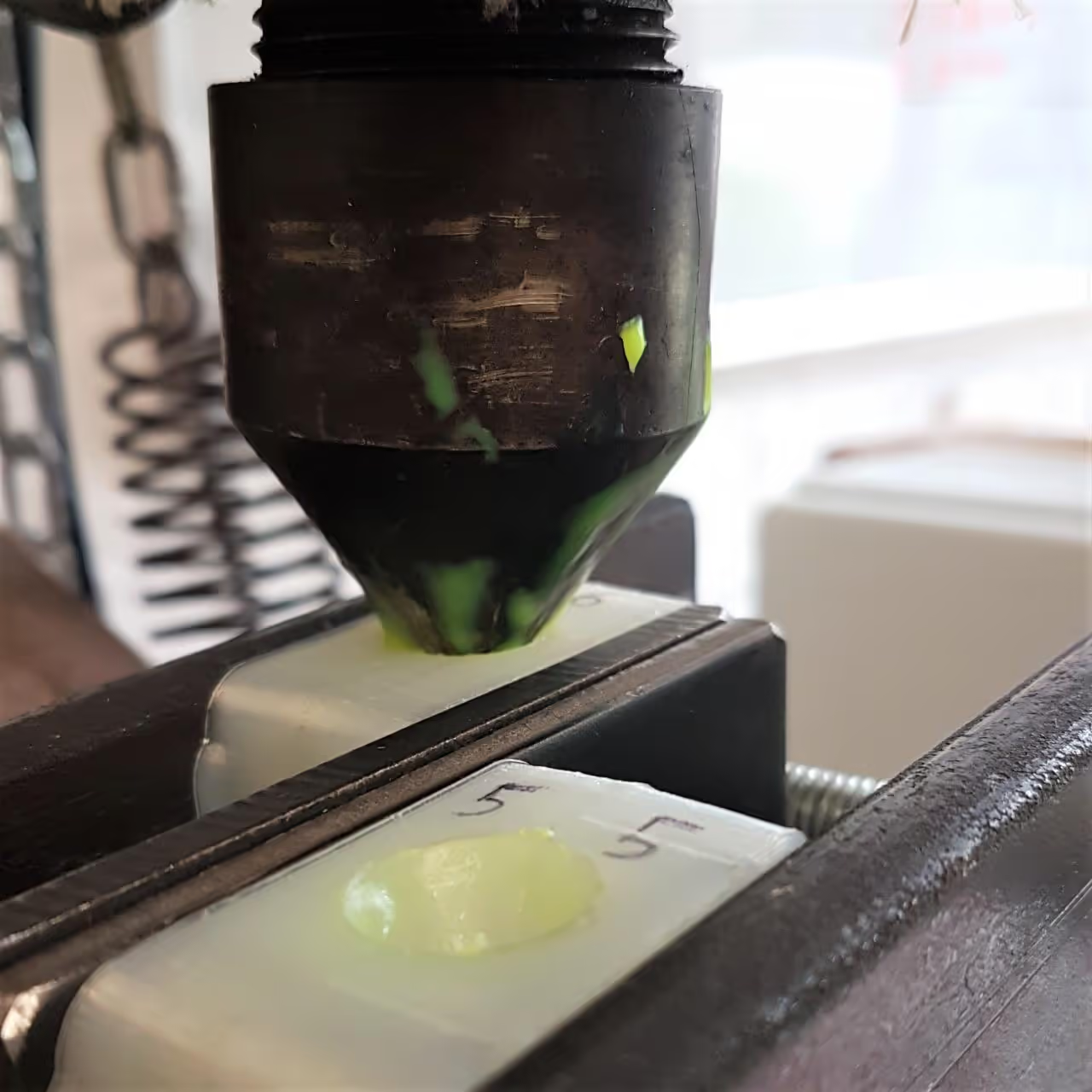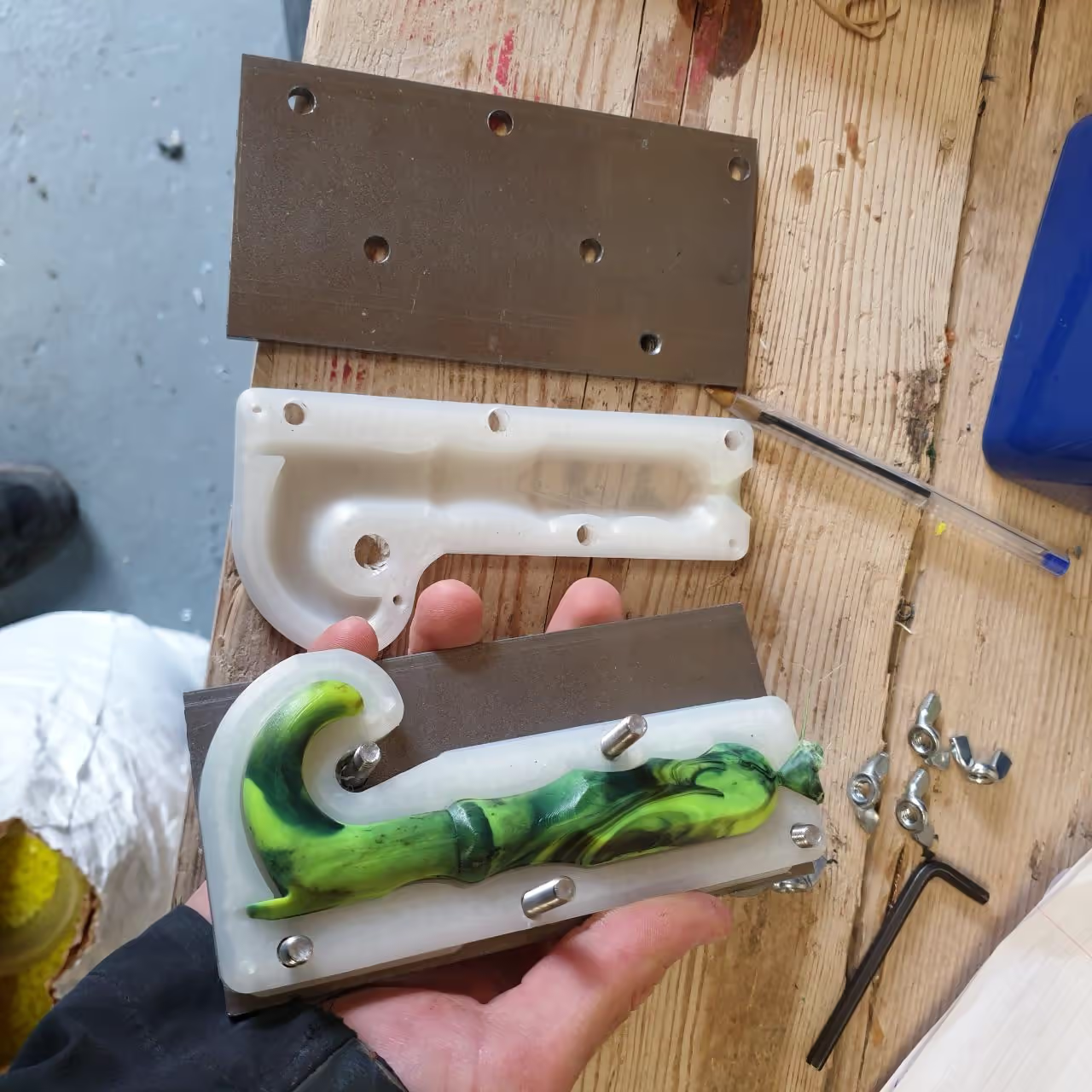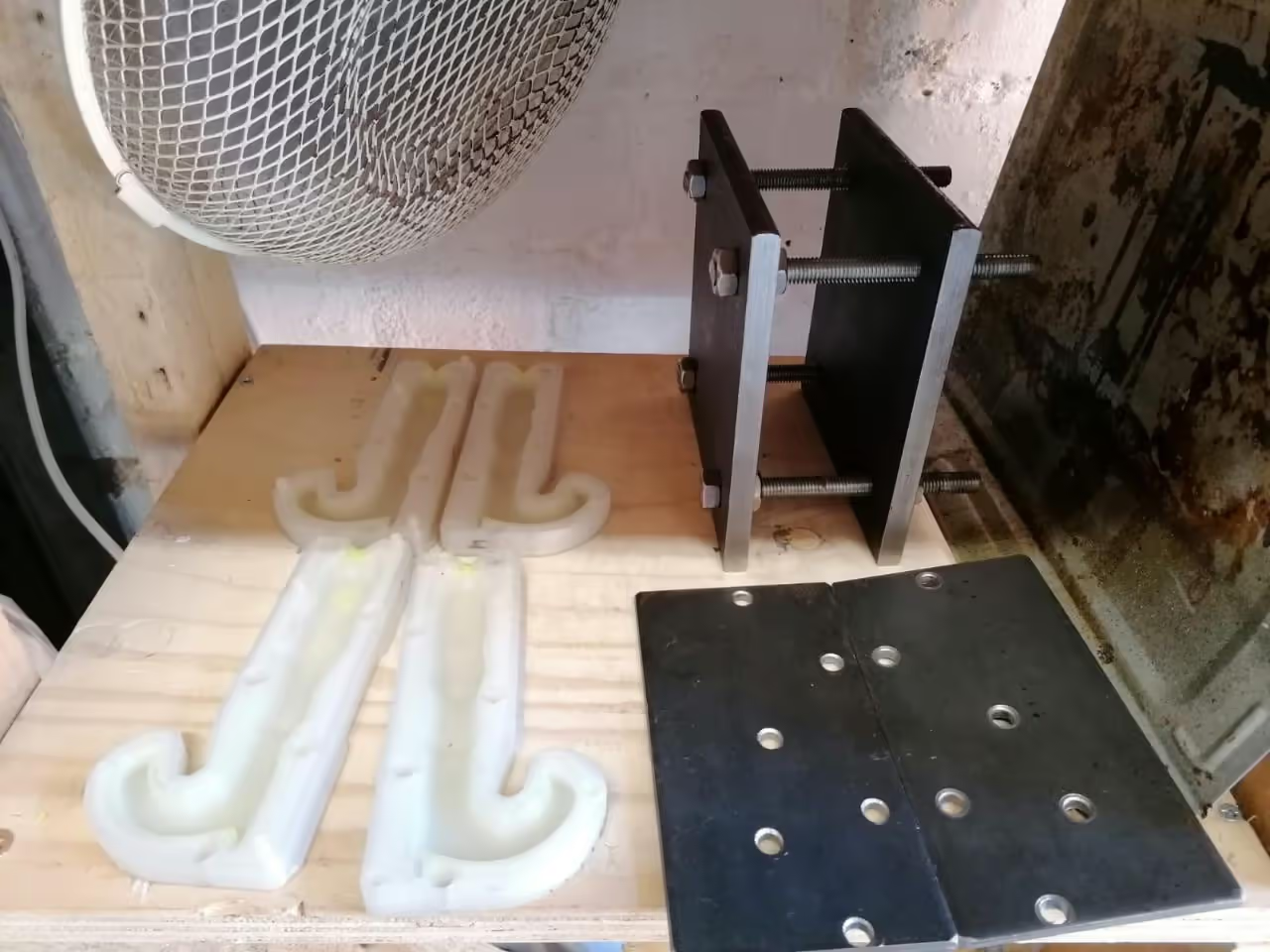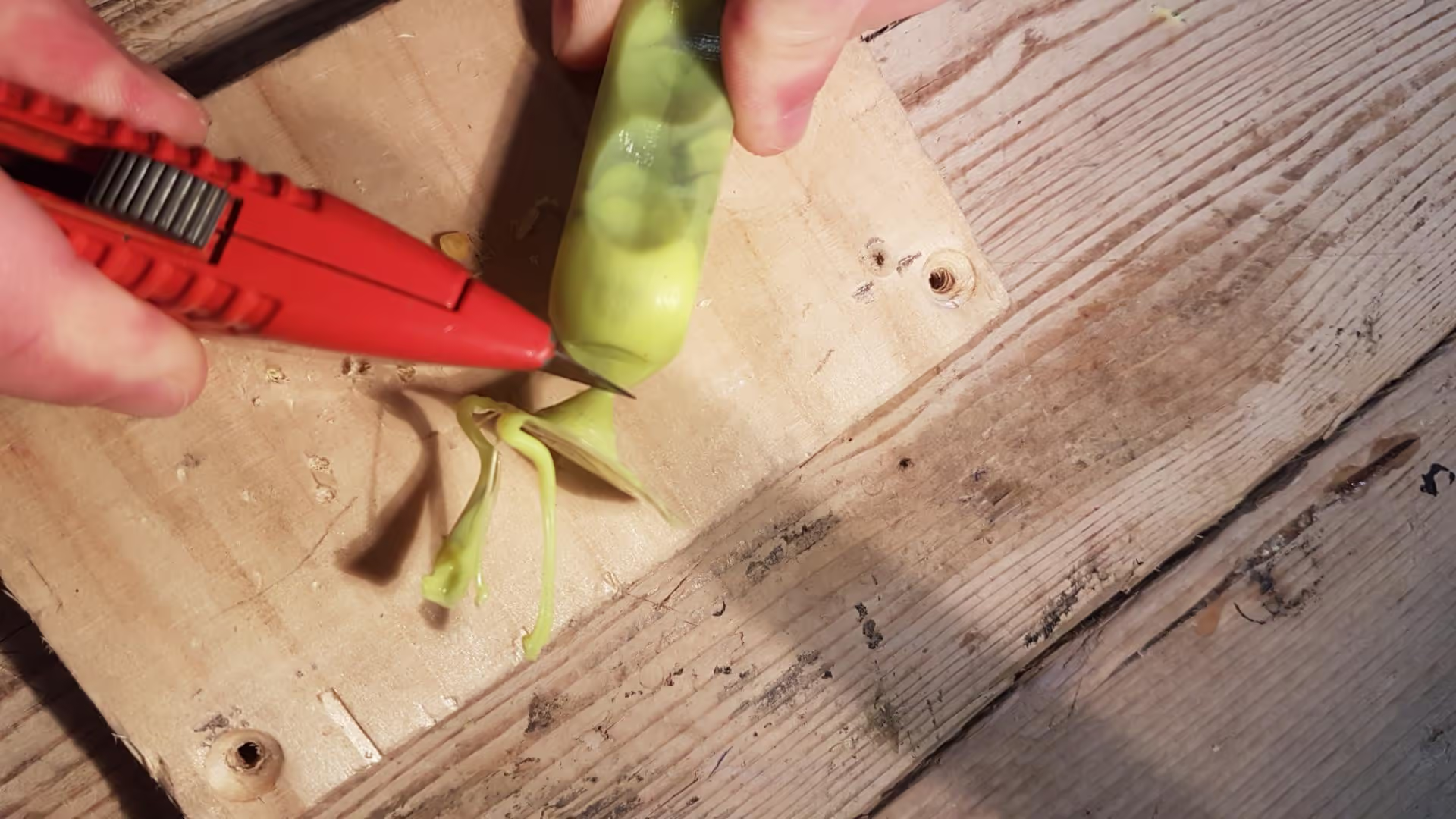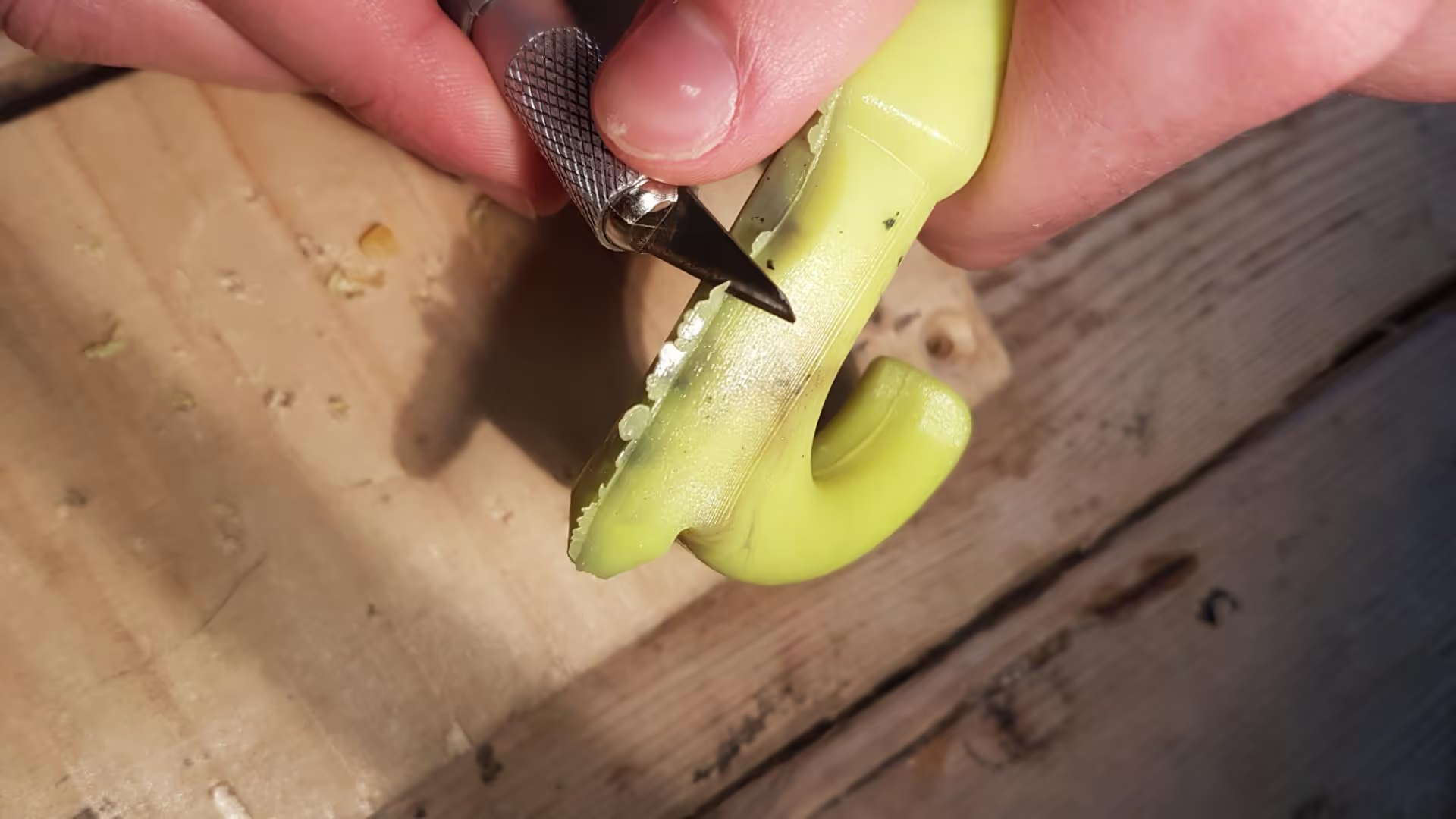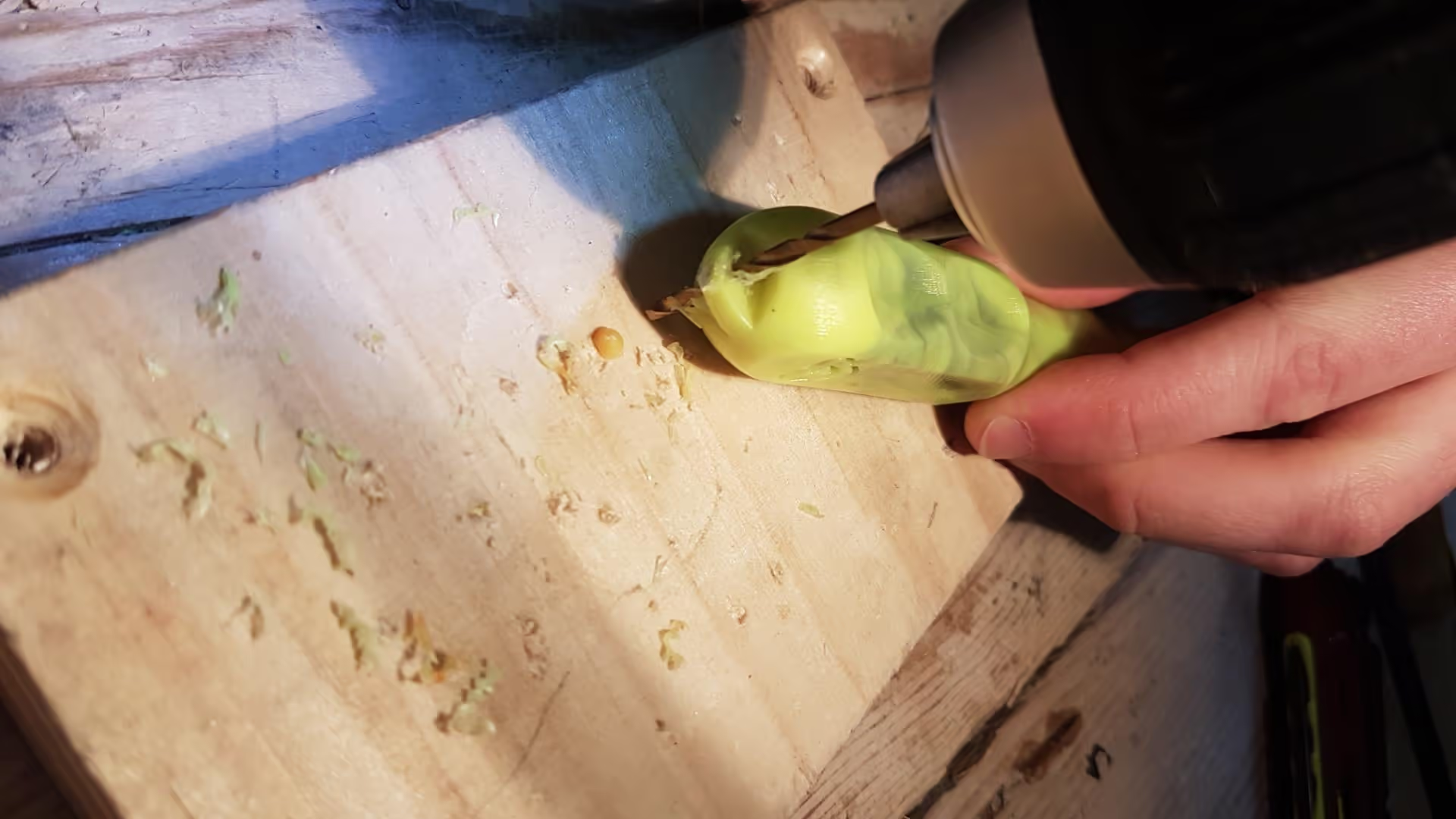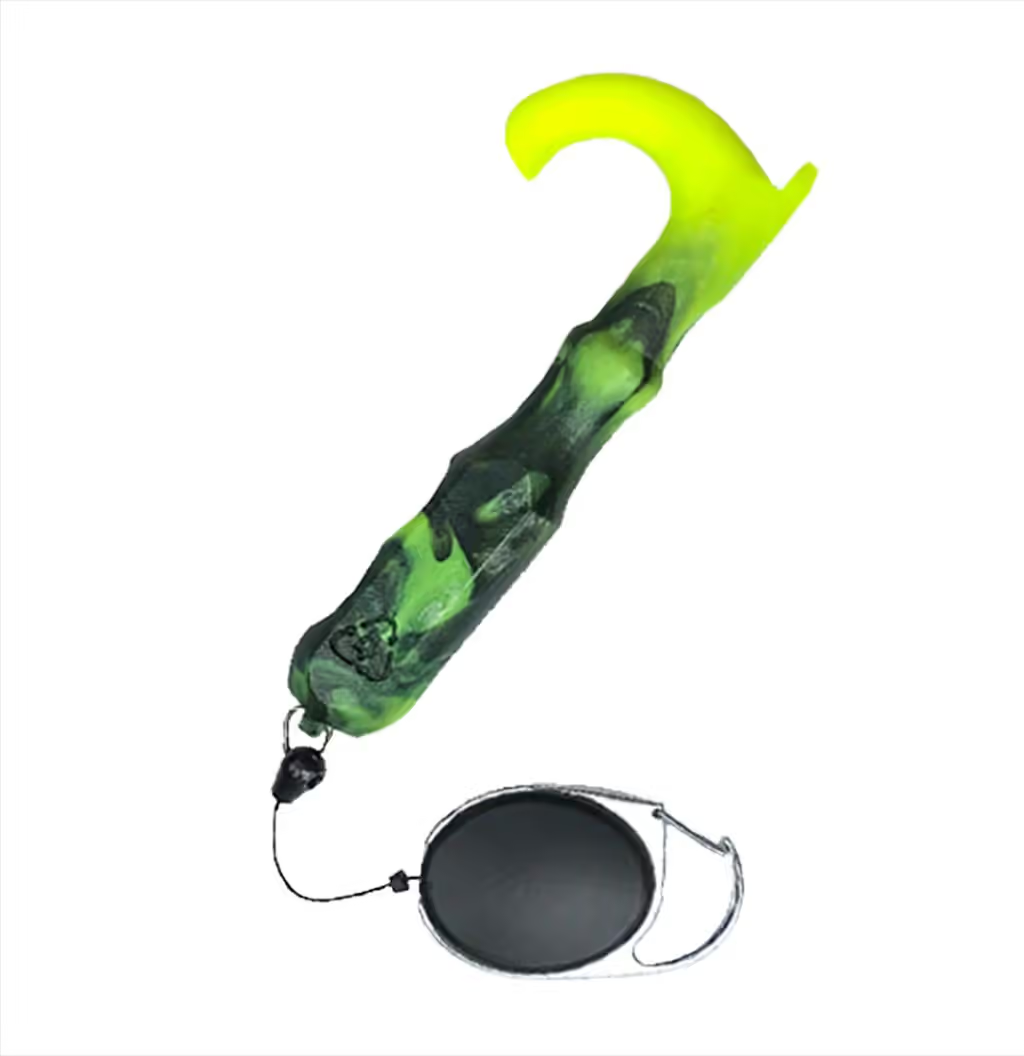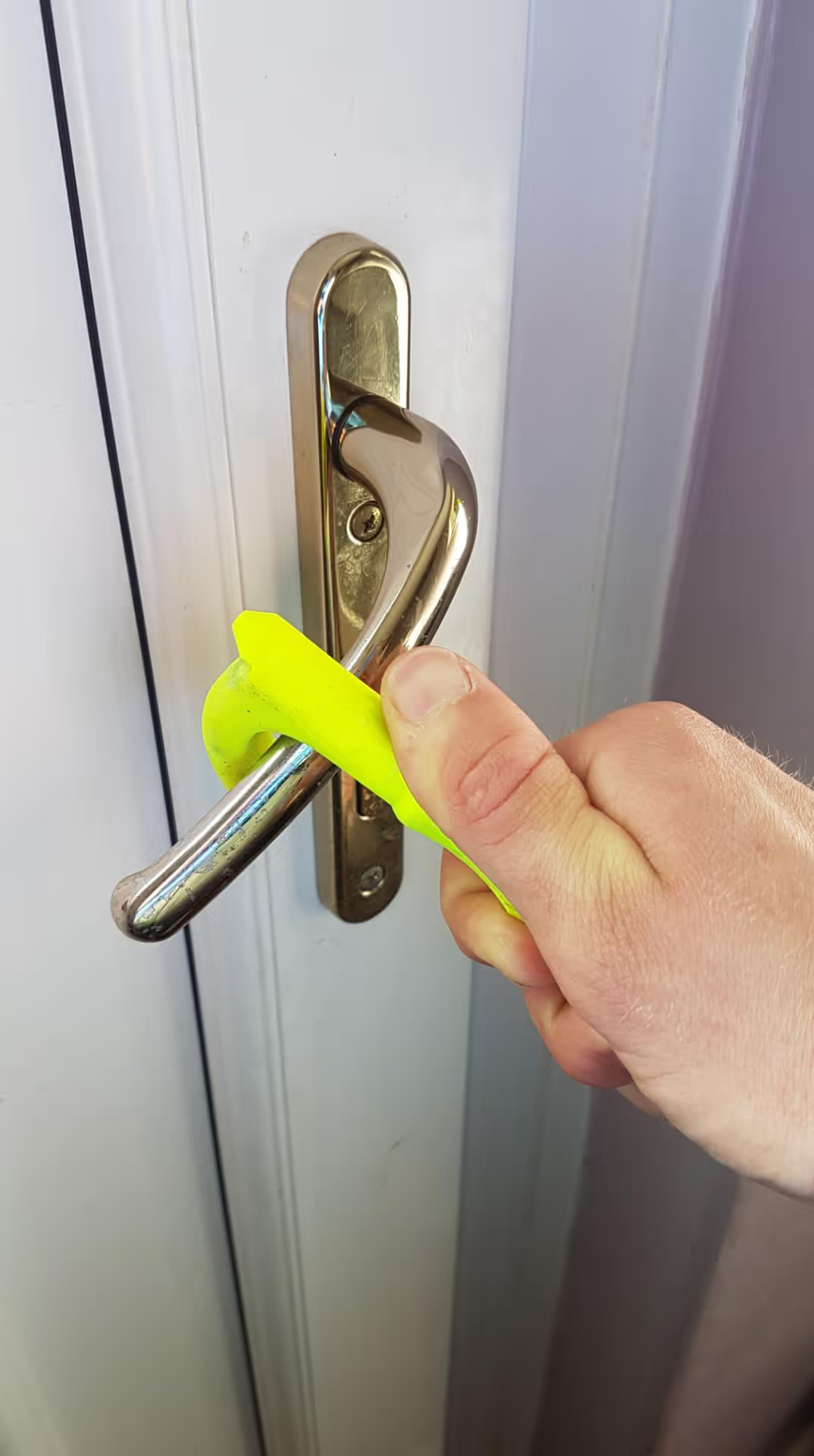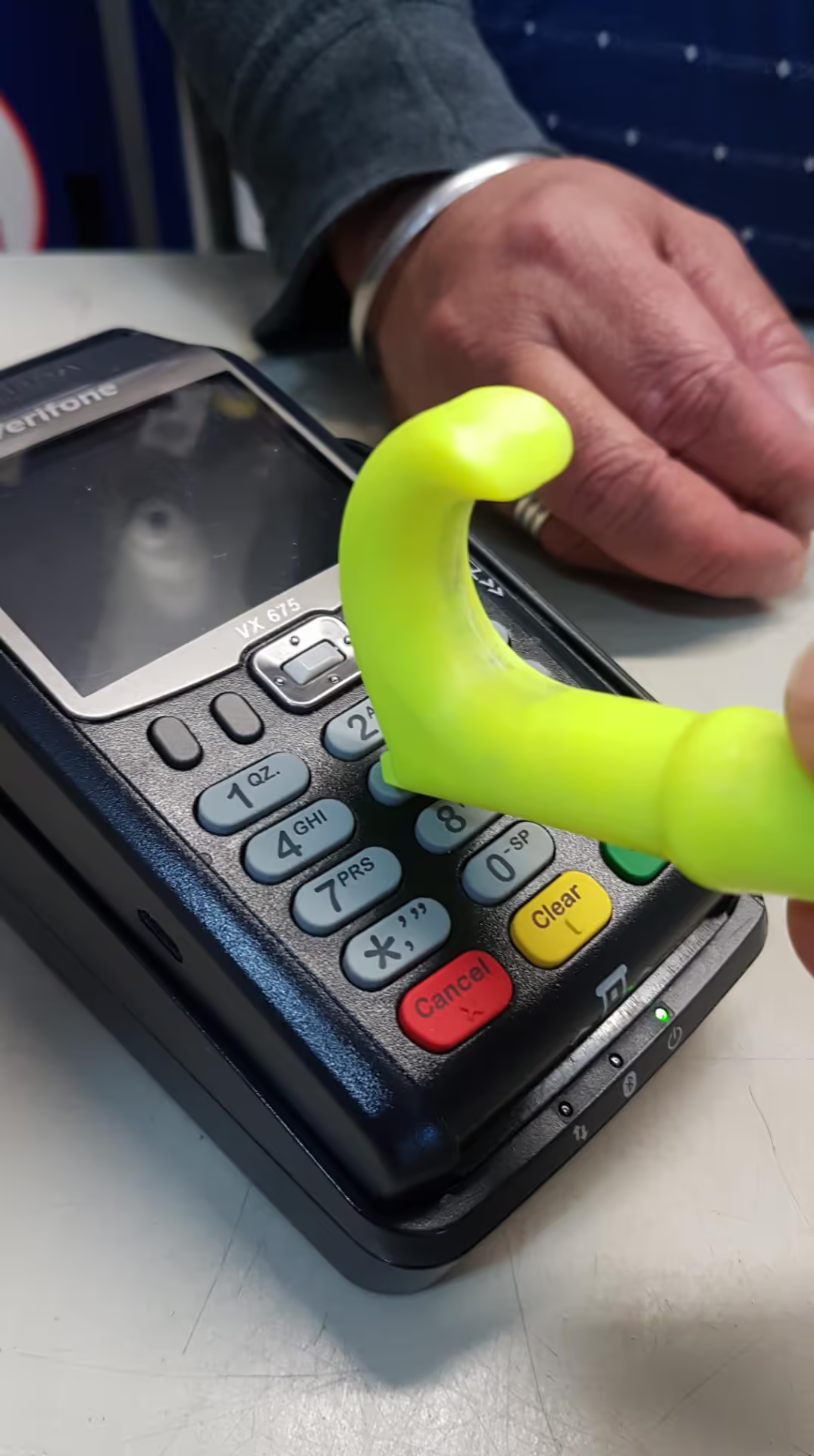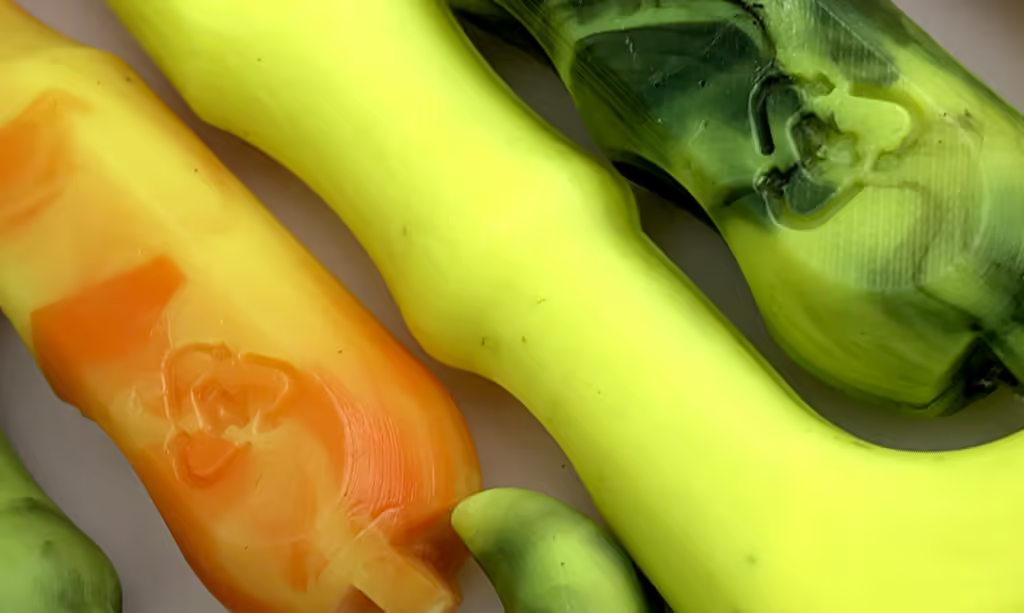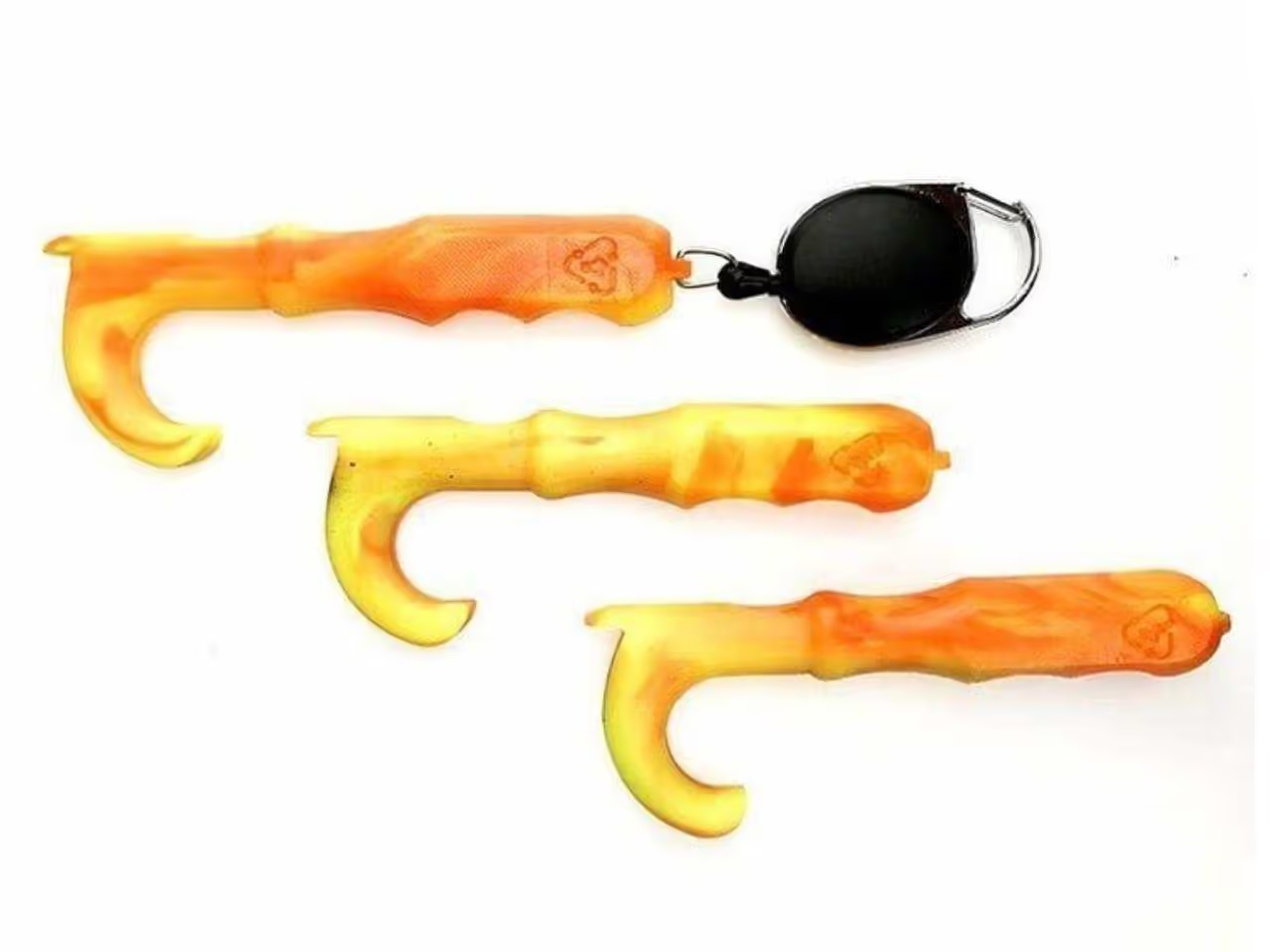Develop a tool for engaging with frequently touched surfaces like door handles, pin pads, and light switches, reducing direct hand contact. This aids in minimizing the spread of Covid-19. Constructed from 3D-printed nylon, the tool allows for rapid mold production to address this need efficiently.
Table of Contents
-
Nylon was chosen for the mold due to its higher melting temperature compared to LDPE, used for making the No Touch Tools. Employing 3D-printed molds ensures minimal plastic usage, in contrast to CNC-machined polycarbonate sheets. While metal molds are preferable for durability and quality, they are more costly and environmentally impactful. The nylon molds have endured over 100 injections with minimal wear and offer a cost-effective alternative to metal molds.
The molds were printed using an Ultimaker 3D printer.
-
Metal Mould Setup Tutorial
For even pressure and heat dissipation, we placed metal plates (0.39 inches) on either side of the mold. Alternatively, consider designing bolt slots in the mold halves for direct clamping.
Initially, we used through-bolts, which proved impractical. We switched to 0.39-inch steel plates clamped together with M10 bolts (0.39 inches). This improvement allows for easy mold removal and separation of parts, enhancing efficiency.
-
We use LDPE from wheel nut indicators, noted for their vibrant color and quality. Injection temperature ranges between 160-170°C (320-338°F). For each tool, 40g (1.41 oz) of plastic is placed in the injection molder. Initial leakage ensures proper flow and excess plastic ensures the mold is completely filled. The injection is performed manually and slowly, maintaining pressure once the mold is filled, as indicated by overflow. The use of nylon molds insulates the plastic, preventing rapid cooling, thus requiring sustained pressure post-injection.
-
After injection, keep the molds clamped for 3 minutes to cool before removing the No Touch Tool. Removing the part too early may cause deformation. Do not exceed 6 minutes, as excessive shrinkage can hinder release.
Unclamp the mold, carefully peel out the part, and allow molds to cool. A fan can accelerate this process. Using multiple molds and clamps allows for efficient cycle times, enabling new injections while previous ones cool.
-
Use a sharp knife to remove the sprue and any flashing. Drill a hole at the bottom for a keyring. Attach a retractable lanyard to keep the tool accessible while minimizing contamination risk.
-
Utilize tools to avoid direct contact with high-touch surfaces. Stay safe.
-
To enhance efficiency or reduce tool costs, consider these methods:
- Pre-heat plastic before injection using an oven rather than an extruder.
- Use multiple molds to allow some products to cool while injecting others.
- Load the injector with multiple doses, such as 1.4 oz (40 g), for successive injections.
Tools Constructed
- 3D-printed nylon molds (Ultimaker 3D Printer)
- Metal plates (0.39-inch thickness)
- M10 bolts and clamps for mold pressure
- Sharp knife for trimming sprue/flashing
- Drill for keyring hole attachment
Materials & Consumables
- Nylon filament for mold creation
- LDPE plastic (sourced from wheel nut indicators)
- 40g LDPE per tool injection cycle
- Retractable lanyard for hygiene
- Sprue/flashing waste material
Software
- Ultimaker Cura (slicing software for 3D printing)
- CAD software for mold design
Hardware
- Ultimaker 3D Printer (Product page)
- Manual injection molder
- Metal plates (0.39-inch steel)
- Bolt clamps for mold assembly
- Oven for LDPE pre-heating (alternative to extruder)
Articles
- 3D-printed contact-free devices designed and dispatched against COVID-19
- Makers 3D Printing and Sewing Gear to Help Fight Coronavirus
- Slow spread of coronavirus by 3D printing a hands-free door handle
- ~~Hands-free door handle developed to prevent coronavirus spread~~
- How to Use 3D Printing for Injection Molding
- 3D Printed Nylon 12: Shaping the Landscape of Manufacturing
Books
- Injection Mold Design Handbook (Lowry's Books)
- Injection Mold Design Handbook (WORD Bookstore)
- Injection Mold Design Handbook (Prairie Lights Books)
Papers
Youtube
Opensource Designs
